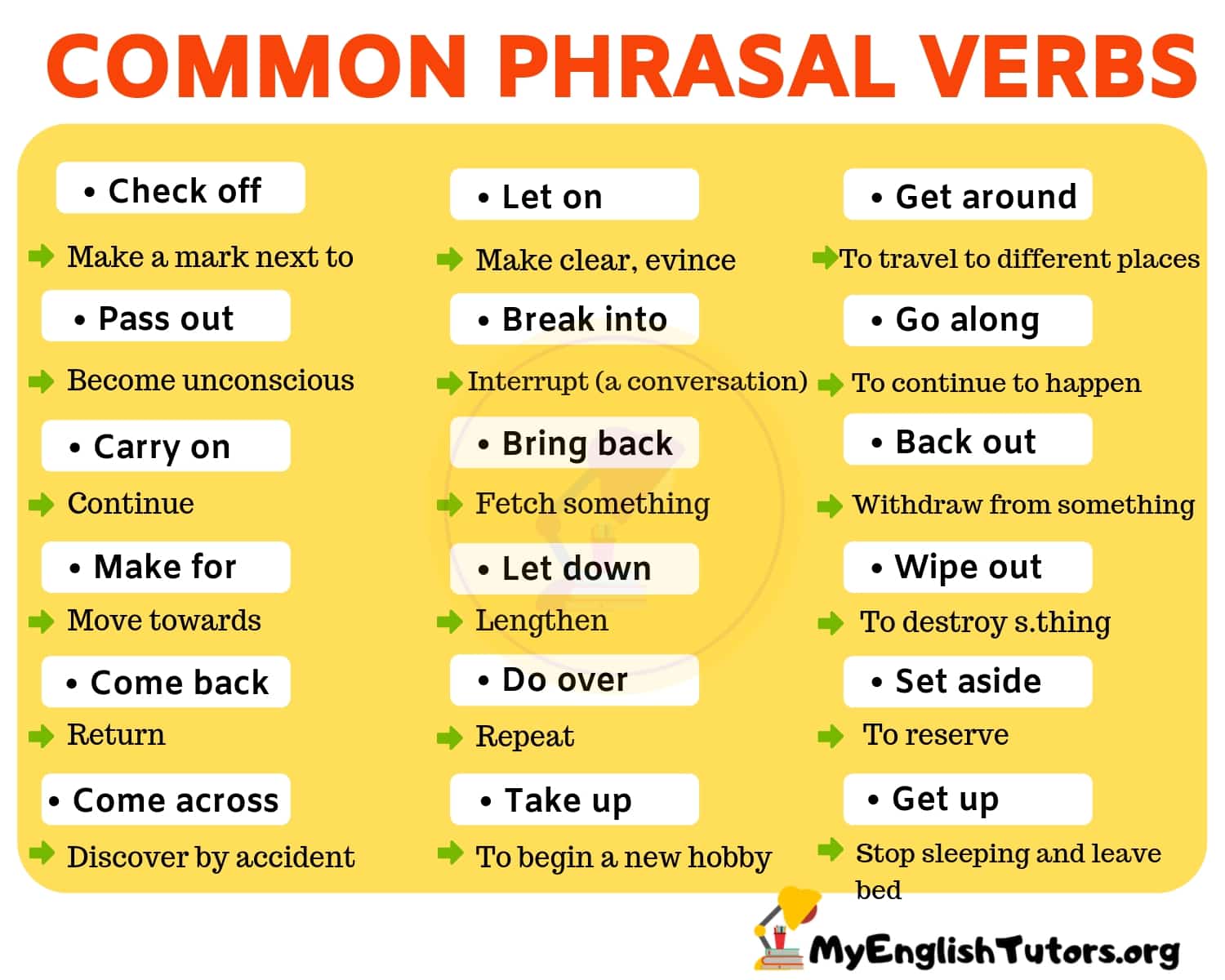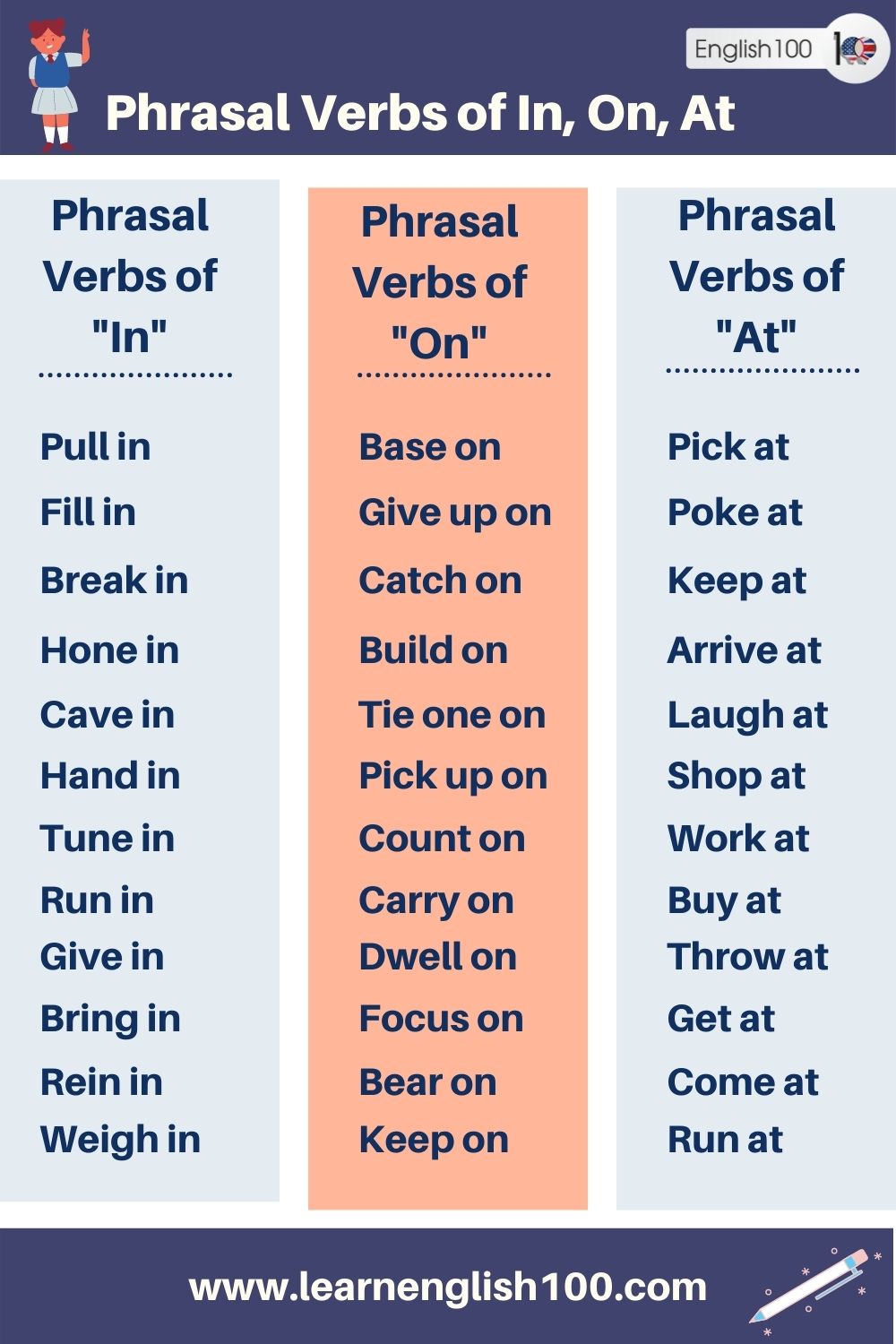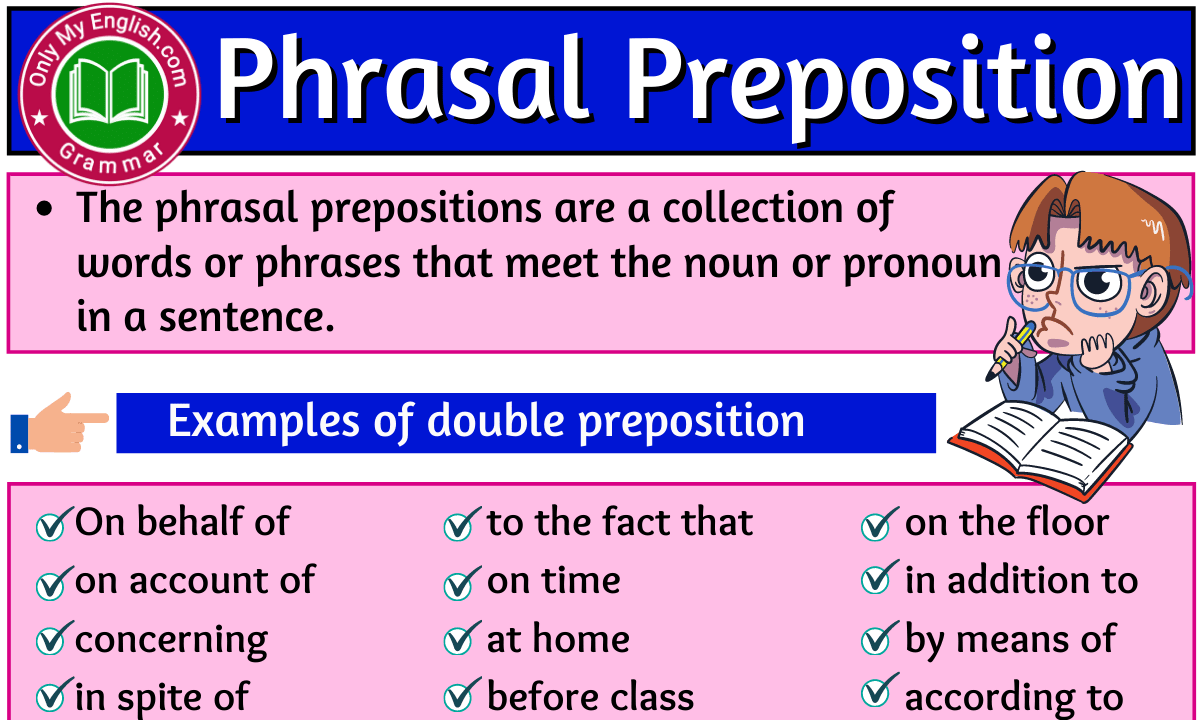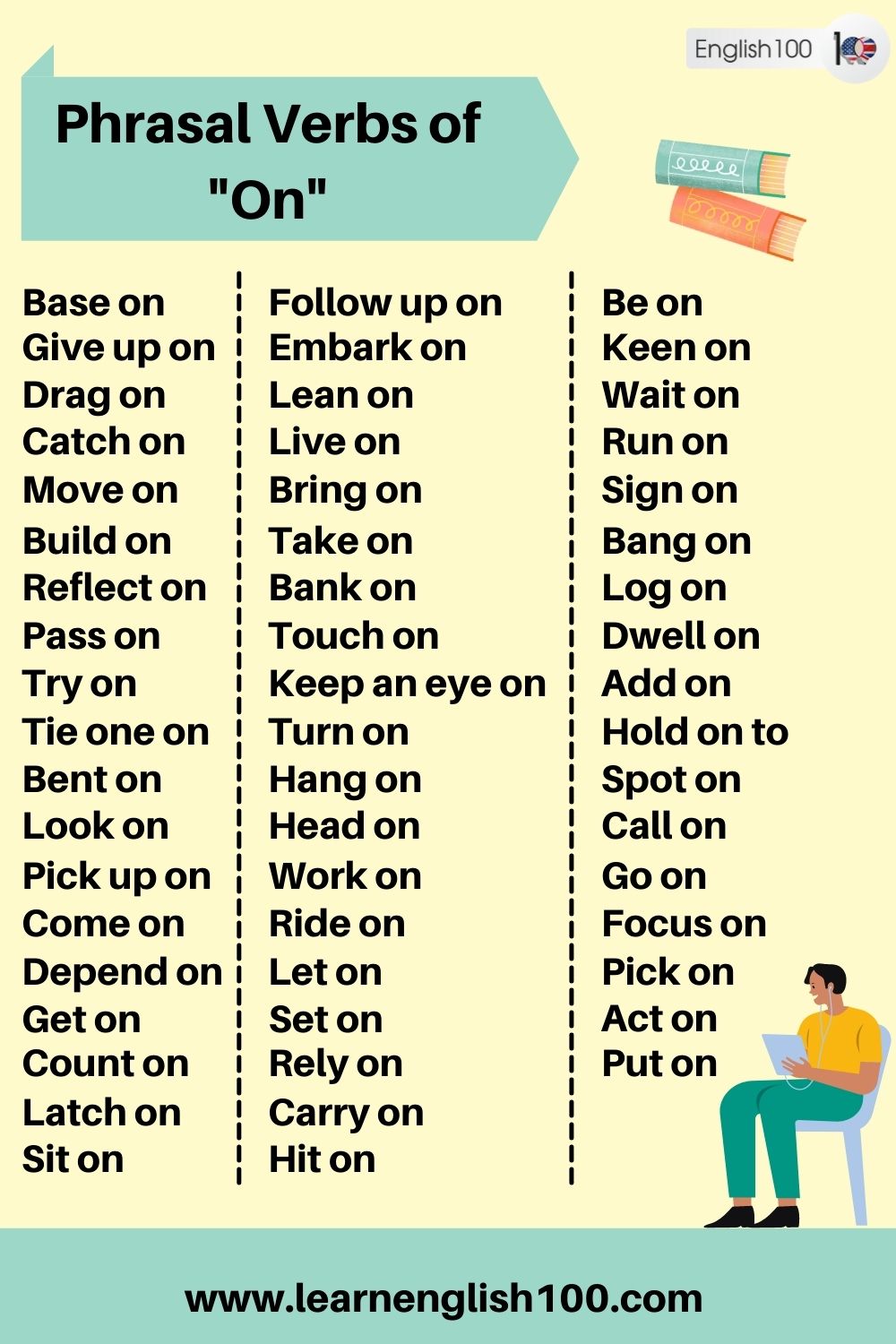108 phrasalprepositional verbs (list) by AIEL Issuu

120+ Useful Verb Preposition Combinations in English • 7ESL
Prepositions vs. Phrasal Verbs Prepositional phrases and phrasal verbs are two of the most complicated grammar forms to master in English. Many verbs do not fit neatly into one category or another. The best way to learn about this topic is to study phrasal verbs. First, let's review some simple definitions.

Phrasal Verbs List of 30 Important Phrasal Verbs and Their Meaning! My English Tutors
Phrasal Verbs and Prepositional Verbs are both made up of more than one word. Phrasal verbs are made up of a verb and a particle. This particle can either be an adverb or a preposition; sometimes a phrasal verb can have more than one particle. A prepositional verb is made up of a verb and a preposition.

Phrasalprepositional verbs (list)
Verbs that take a particle or particles are called phrasal or prepositional verbs. Particles are adverbs that describe the verbs and prepositions (words like in, on, at, up, down, etc.). A preposition takes an object, but an adverb does not. So, when we use the preposition on we might say; The pen is on the table (table is the object).

Prepositional Phrase List English Study Here
A verb (e.g., "It goes ") becomes a phrasal verb with the addition of one preposition (e.g., "The light goes out ") or more (e.g., "She goes out with him"). Each additional preposition completely changes the meaning of the verb. Example: goes - as in "The train goes west." goes -> "moves" Example: goes out - as in "The light goes out."

Examples Prepositional Phrase Prepositions A Complete Grammar Guide With Preposition Examples
What do Phrasal and Prepositional Verbs have in common and what are the differences? Two-word verbs can be Phrasal Verbs or Prepositional Verb. Phrasal Verbs often have a very different (idiomatic) meaning. verb: look adverb: in Phrasal Verb: look in 1.

What are Phrasalprepositional verbs? Download useful list Verb, English language learning
A phrasal verb is a verb like pick up, turn on or get on with. These verbs consists of a basic verb + another word or words. The two or three words that make up a phrasal verb form a short "phrase" - which is why we call them "phrasal verbs". But a phrasal verb is still a verb. Look is a verb. Look up is also a verb - a different verb.

Prepositional Phrases List of Prepositional Phrase Examples in English My English Tutors
So what is the difference between a phrasal verb and a prepositional verb? Strictly speaking, a phrasal verb consists of a verb and an adverb (or in the case of 3-word phrasal verbs, an adverb and a preposition). When phrasal verbs are transitive, the object can go either between the verb and the particle or after them: She let her friends down.

Mastering Prepositional Phrases A Comprehensive Guide! English 100
Phrasal verbs are very common in English, especially in more informal contexts. They are made up of a verb and a particle or, sometimes, two particles. The particle often changes the meaning of the verb.. However, it might be confusing to think of phrasal verbs as "using prepositions" as adverb particles. It might be better to think of these.

127 Popular Prepositional Phrases IN, ON, AT, BY, OUT English Study Online
Phrasal and prepositional verbs appear identical in active transitive statements in which they are followed by a noun. It is only when we replace the noun with a pronoun, or try to put the sentence into the passive, that the differences become more clear, and the problems arise.

108 phrasalprepositional verbs (list) by AIEL Issuu
How we form phrasal and prepositional verbs Position of the object of a phrasal verb With a phrasal verb (verb + adverb), the position of the object (a noun) is flexible, i.e. it can sit either between the verb and the adverb or after the adverb: She took her coat off. (The object her coat is between the verb and the adverb.) or

100+ Phrasal Verbs List in English pdf download » OnlyMyEnglish
A phrasal verb is a multi-word verb made up of a main verb and at least one preposition or a particle that changes the meaning of the verb from the original verb. Table of Contents Easy Examples of Phrasal Verbs Real-Life Examples of Phrasal Verbs Transitive and Intransitive Phrasal Verbs Separable and Inseparable Phrasal Verbs

Phrasal Preposition Definition, Examples, and list
Phrasal prepositions are often used in everyday speech and writing, and they can also be useful in academic contexts. They are used to express relationships between nouns, verbs, adjectives, adverbs, and essentially any part of speech. Examples include: " in front of ", " out of ", " due to ", " on behalf of ", and " along.

Mastering Prepositional Phrases A Comprehensive Guide! English 100
There are three types of multi-word verbs: phrasal verbs, prepositional verbs and phrasal-prepositional verbs. Sometimes, the name 'phrasal verb' is used to refer to all three types. Phrasal verbs Phrasal verbs have two parts: a main verb and an adverb particle.

Prepositional Phrase List of Useful Prepositional Phrases in English ESL Forums
A phrasal verb is a verb that is combined with an adverb or a preposition . The combination creates a new meaning. Click Here for Step-by-Step Rules, Stories and Exercises to Practice All English Tenses Sometimes, a verb is combined with an adverb AND preposition for a whole new meaning. We call these Phrasal-Prepositional Verbs.

100 Most Common Phrasal Verbs List with Meaning English Grammar Here
In the traditional grammar of Modern English, a phrasal verb typically constitutes a single semantic unit consisting of a verb followed by a particle (examples: turn down, run into or sit up ), sometimes collocated with a preposition (examples: get together with, run out of or feed off of ).

Most Important Verb + Preposition List English Study Here
A phrasal preposition is a combination of a preposition and an adverb or particle. Some common examples of phrasal prepositions include "in front of," "in spite of," and "by means of." Phrasal prepositions can express a wide range of relationships between people, objects, and ideas, including location, time, cause and effect, and manner.